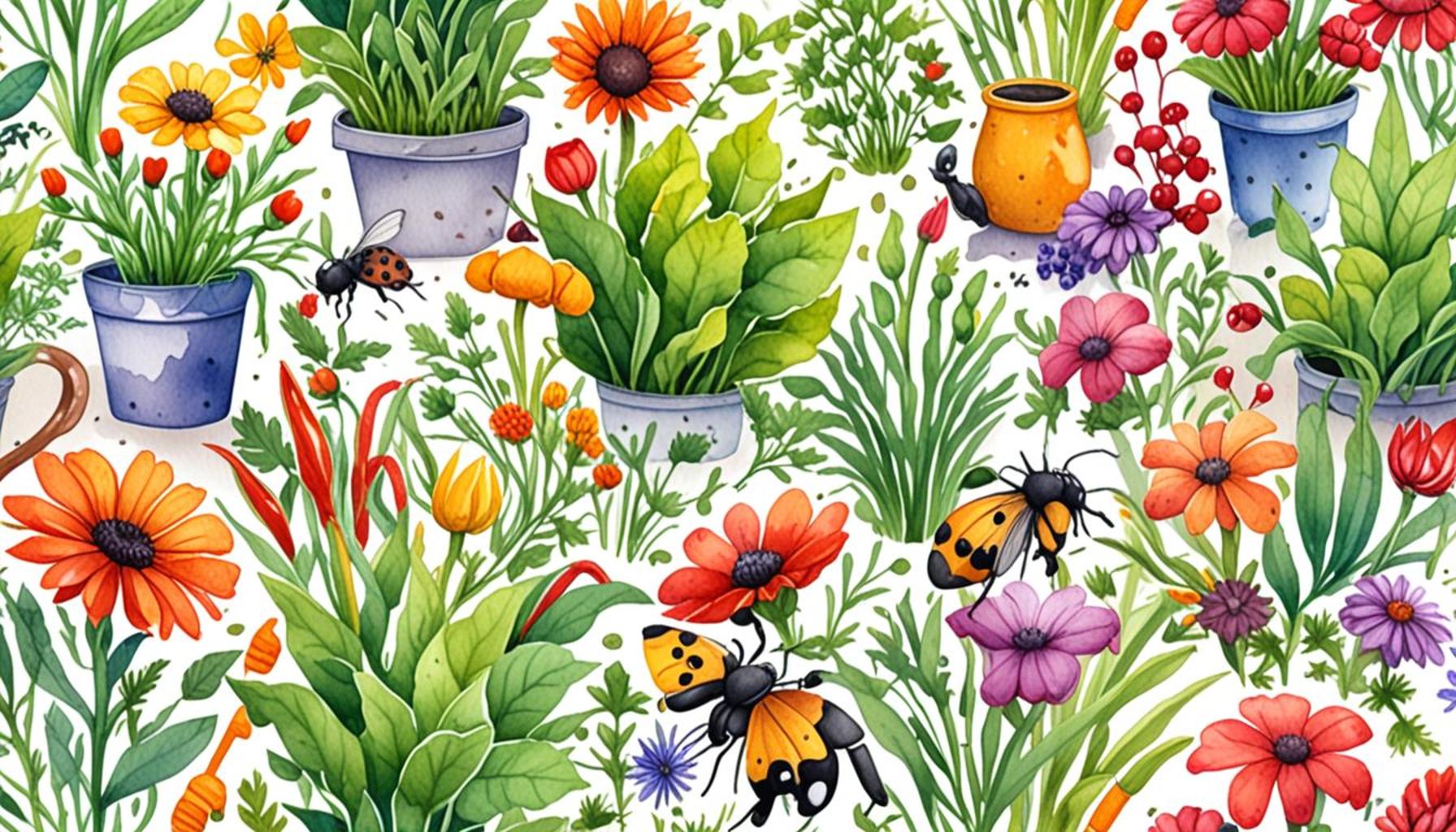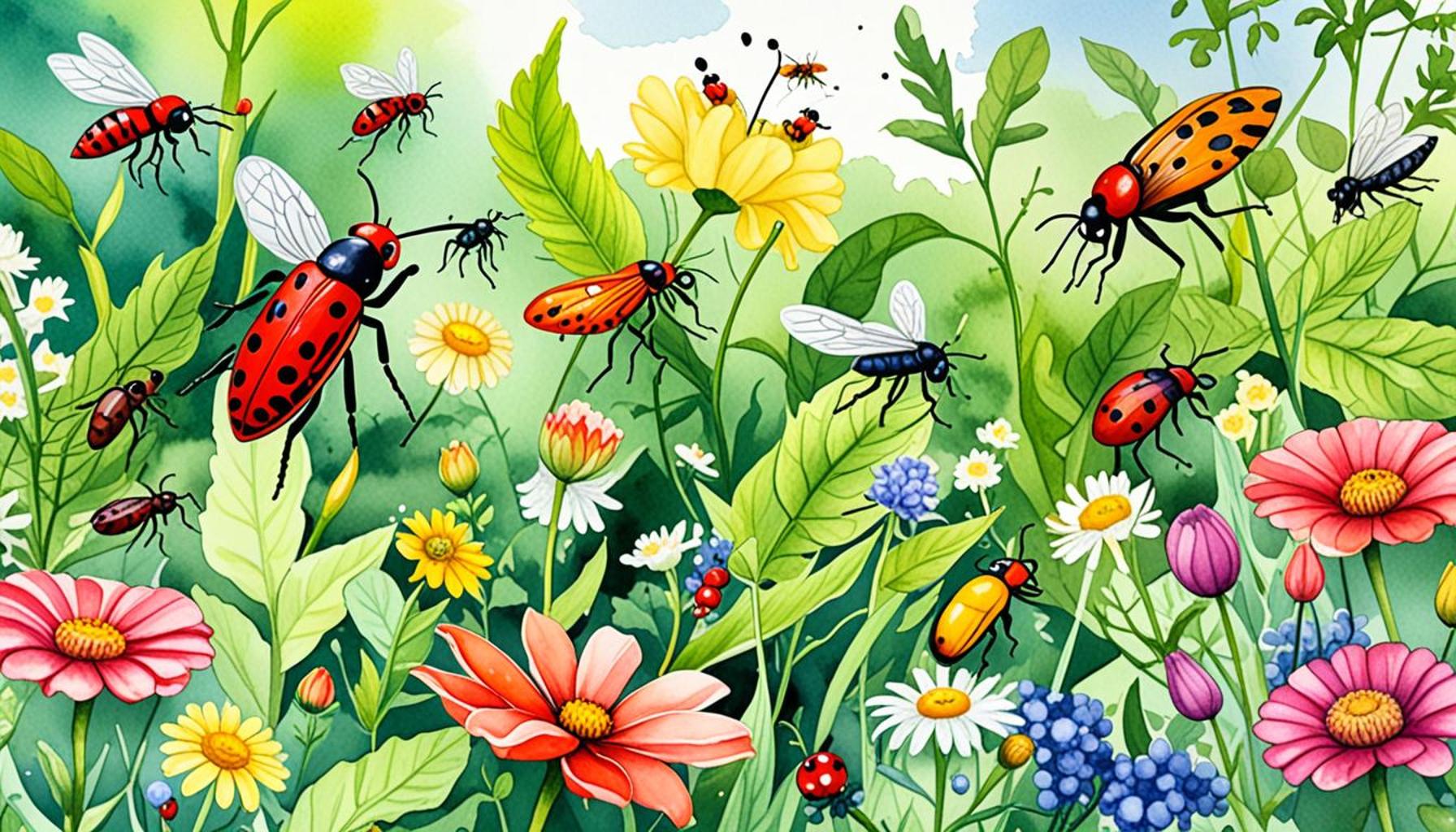Seasonal Pest Monitoring Techniques for Beginner Gardeners

Understanding Seasonal Pest Monitoring Techniques
Gardeners, whether seasoned or novice, quickly discover that managing pests is an integral part of maintaining a healthy garden. The battle against pests can often feel overwhelming, yet the right strategies can transform this challenge into a manageable aspect of gardening. Effective pest management hinges not just on instant remedies, but on a deep understanding of seasonal pest monitoring techniques that adapt with the changing environment.
As we cycle through the seasons, the types of pests that invade our gardens shift, presenting unique challenges at every turn. For example, spring brings an influx of aphids as plants begin to bloom, while summer often sees an uptick in beetles and caterpillars, thanks to warmer weather. By employing various strategies to identify and combat these pests, gardeners can take proactive measures to protect their plants year-round. Here are some vital techniques to consider:
- Regular Inspection: Make it a habit to inspect your plants weekly. Look for signs of damage, like chewed leaves or discolored foliage, which could indicate a pest presence. Consider setting a specific day each week for thorough inspections, as consistency is key in early pest detection.
- Use of Sticky Traps: These brightly colored traps can serve dual purposes: luring and capturing flying insects like aphids and whiteflies. Placing them strategically around your garden not only provides a visual indication of pest activity but can also help reduce insect populations.
- Companion Planting: This is an ancient practice that involves growing specific plants together to manage pests naturally. For instance, planting marigolds alongside tomatoes can repel nematodes, while basil can deter flies and mosquitoes. Researching beneficial plant pairings can yield a natural pest deterrent and enhance your garden’s biodiversity.
- Soil and Plant Health: Understanding that healthy plants are less vulnerable to pest infestations is crucial. Implement practices like crop rotation, adding organic compost, and ensuring adequate watering to bolster plant resilience. Well-nourished plants can better withstand pest pressures.
Moreover, keeping a garden journal is invaluable. Record climatic conditions, pest sightings, and plant growth stages in your journal, which will help you recognize patterns and adjust your pest management techniques. For instance, if you notice certain pests are consistently problematic after heavy rains, you may need to implement preventive measures like increased inspections or installing drainage solutions.
A proactive approach to pest monitoring not only protects your plants but also enhances your gardening skills. Over time, utilizing these techniques will lead to increased confidence in your ability to handle pest challenges as they arise. Each season will present new learning opportunities, allowing your garden to thrive and produce a rich harvest.
Ultimately, embracing the art of seasonal pest monitoring is about more than just defense; it’s an opportunity to deepen your connection with nature. As you continue to explore various pest management strategies, you will likely find joy in both the process and the beauty of a thriving garden.
DISCOVER MORE: Click here to learn about the best soil types for your garden
Essential Techniques for Effective Pest Monitoring
Seasonal pest monitoring requires a blend of vigilance, knowledge, and the right tools. For beginner gardeners, understanding how environmental factors influence pest behavior can be crucial in establishing a successful pest management routine. Here are essential techniques that can help you stay ahead of pest invasions:
- Establish a Pest Monitoring Schedule: One of the first steps in pest management is to establish a consistent monitoring schedule. Choose a specific time each week to dedicate to checking your garden. This not only helps you avoid infestations but also develops your observational skills. Pay close attention to different areas of your garden: early blooms, seedlings, or mature plants may attract various pests at different times of the season.
- Identify Pest Species: For effective monitoring, it’s vital to know what pests are common in your region and what plants they typically target. Resources such as local extension services or gardening clubs can provide valuable insight into pest identification. Familiarize yourself with visual aids, such as field guides or online databases, to help you accurately differentiate between harmful pests and beneficial insects.
- Utilize Natural Pest Detection: Many gardeners overlook the benefits of natural pest detection methods. For instance, inviting birds and beneficial insects, like ladybugs and lacewings, can create a balance in your ecosystem. Using birdhouses or insect hotels promotes their presence, which naturally reduces pests. By understanding the role of beneficial species, you can create a more stable environment for your plants.
- Implement Cultural Practices: Adjusting cultural practices can significantly reduce pest problems. Techniques such as proper plant spacing permit airflow, reducing humidity that pests like aphids thrive in. Additionally, removing debris such as fallen leaves and dead plants can remove potential pest habitats. Healthy plants are better equipped to fend off pest invasions, so fostering plant vitality is paramount.
Maintaining accurate records also plays a critical role in pest monitoring. Keeping detailed notes in a garden journal can help you recognize patterns over time. Track the seasons when certain pests appear, the weather conditions during their peak, and any successful interventions you employed. With this data on hand, you will be better prepared for future infestations.
Another useful practice is collaborating with other local gardeners. Consider forming a community group or joining a gardening club where sharing experiences and knowledge can lead to enhanced pest monitoring techniques. Communication about what pests are currently impacting your area can foster a proactive approach within your gardening circle.
As you immerse yourself in these techniques, remember that pest management is not merely about eradication; it’s about understanding the ecosystem you’ve created. The relationship between your garden and its inhabitants is intricate, and embracing this complexity can lead to a more vibrant and flourishing environment.
| Technique | Description & Benefits |
|---|---|
| Visual Inspections | Regularly examining plants for signs of pest damage allows gardeners to catch infestations early, minimizing potential harm. |
| Pesticide Traps | Using sticky traps can monitor pest populations and indicate when intervention is necessary, providing a practical approach for beginners. |
| Seasonal Timing | Tracking seasonal patterns helps anticipate pest life cycles, enabling targeted strategies that reduce pesticide use and improve garden health. |
| Companion Planting | Planting certain species together can deter pests naturally, fostering a healthier ecosystem in the garden while attracting beneficial insects. |
For beginner gardeners diving into the world of Seasonal Pest Monitoring Techniques, understanding and implementing these methods brings palpable benefits. Regular visual inspections not only catch potential issues early but also foster a routine that enhances overall gardening intuition. The simplicity of pesticide traps provides an easy entry point to gauging pest activity without overwhelming complexities. Additionally, grasping the importance of seasonal timing empowers gardeners to align their interventions with natural pest patterns, resulting in more efficient pest control strategies. Finally, the practice of companion planting offers a holistic approach, allowing gardeners to leverage natural relationships between plants to thwart pests, all while nurturing a flourishing garden. These techniques together create a robust foundation for managing garden health effectively.
DIVE DEEPER: Click here to discover more tips
Advanced Strategies for Comprehensive Pest Surveillance
As gardeners delve deeper into the fascinating world of pest monitoring, various advanced strategies can enhance vigilance and improve outcomes in managing pest populations. Feeling confident in your monitoring approach involves knowing additional tools and methods that can be utilized to tailor your monitoring to the unique needs of your garden.
- Employ Sticky Traps: Sticky traps are affordable and effective tools for monitoring pest populations. These bright yellow or blue cards attract pests like aphids, whiteflies, and fungus gnats through their appealing colors. Place them strategically near plants susceptible to these pests, and replace them regularly to maintain accurate data. By counting the number of pests caught, you can gauge pest pressure and adapt your strategies accordingly.
- Set Up Pheromone Traps: Another effective monitoring technique is using pheromone traps, which utilize scents to attract specific insect pests. For instance, the codling moth trap is particularly useful for apple growers. These traps signify the presence of certain pests and are essential for determining the appropriate timing for interventions. Employing pheromone traps allows for a level of monitoring that is both precise and non-invasive.
- Observe Plant Health Indicators: Monitoring pest populations goes beyond just spotting the pests themselves. Plants often show signs of stress that can indicate an infestation. Look for leaf discoloration, wilting, or unusual growth patterns as telltale signs that pests may be thriving in your garden. By being attuned to these indicators, you can detect and address issues before they escalate into widespread damage.
- Utilize Technology: In today’s digital age, technology can greatly simplify pest monitoring for beginners. Numerous smartphone apps provide pest identification assistance, give prompts for monitoring schedules, and allow gardeners to log observations effectively. Some apps even include data from local sources to report on pest outbreaks in your area, enabling more personalized pest management strategies based on real-time conditions.
It’s also beneficial to stay informed about environmental trends that may influence pest activity. As climate patterns shift, introducing varying weather conditions can significantly affect pest populations. For instance, warmer winters may lead to increased survival rates for pests that typically succumb to cold temperatures. Monitoring local climate conditions can enable you to anticipate potential outbreaks and proactively manage them.
Integrated Pest Management (IPM) is one framework that emphasizes a holistic approach to pest surveillance and control. IPM encompasses many of the techniques mentioned, focusing on environment-friendly practices that minimize reliance on chemical treatments. Research shows that recognizing beneficial insects and cultivating biodiversity in your garden not only improves pest control but also supports the health of the ecosystem.
As you advance your seasonal pest monitoring techniques, consider crafting a personalized pest management plan that incorporates these strategies. This plan should evolve based on your observations and experiences, thereby enhancing your understanding of both pest populations and your garden’s health over time. Engaging in community discussions and workshops can further enrich your knowledge as you continue to grow as a gardener.
EXPLORE: Click here to uncover common pests
Conclusion
Seasonal pest monitoring is an essential skill that every beginner gardener should cultivate to ensure a flourishing garden. By mastering effective techniques such as sticky traps, pheromone traps, and keen observation of plant health indicators, you can establish a proactive approach to pest management. These strategies not only enhance your ability to detect and mitigate pest populations but also allow you to adapt your gardening practices to the unique dynamics of your local ecosystem.
As technology continues to advance, incorporating digital tools into your monitoring regimen can provide unprecedented convenience and insight. With smartphone applications at your fingertips, you can log observations, identify pests, and receive personalized pest alerts. This fusion of traditional methods and modern technology offers an innovative edge to your gardening journey, making it easier than ever to stay on top of pest activity.
Furthermore, embracing the principles of Integrated Pest Management (IPM) can guide you toward environmentally responsible practices. Favoring natural solutions and encouraging biodiversity enriches not just the health of your garden but also the greater ecological landscape. This holistic viewpoint encourages gardeners to consider not only the immediate effects of pest management but also the long-term implications for our planet.
Ultimately, as you refine your seasonal pest monitoring techniques, remember that gardening is an evolving learning experience. Engage with fellow gardeners, participate in local workshops, and continuously adapt your methods based on observations and environmental changes. With each season, you will grow not just as a gardener but as a steward of your garden’s health and vitality. So grab your tools and embark on this rewarding journey, armed with knowledge and a keen eye for detail!


